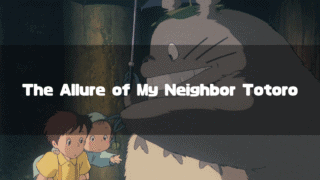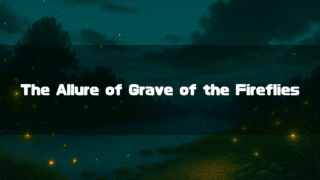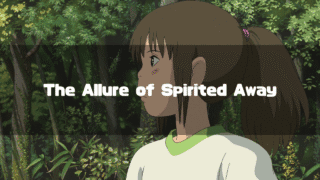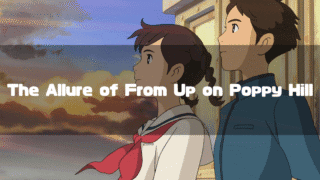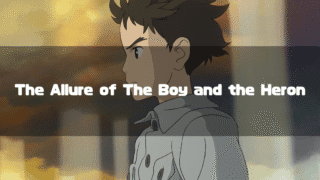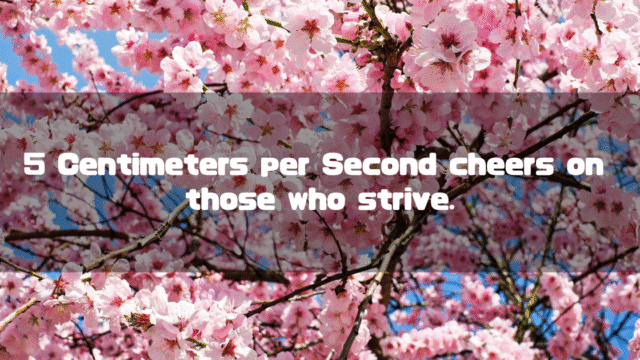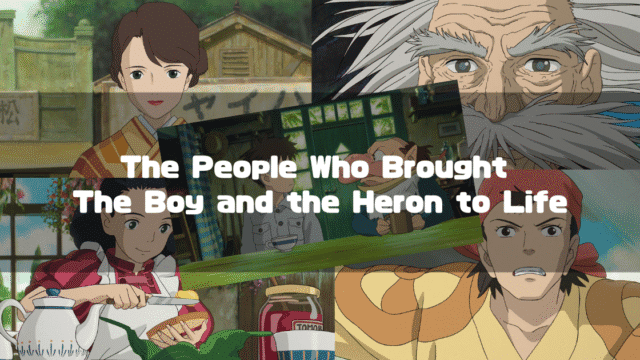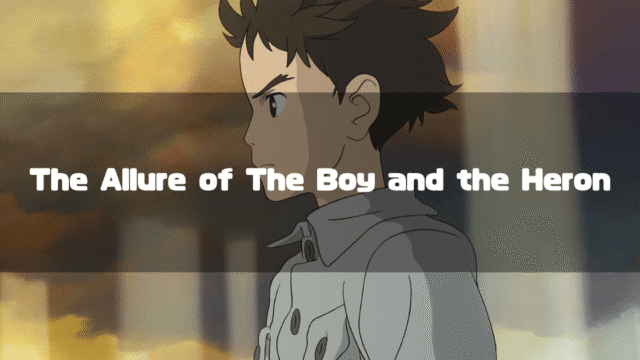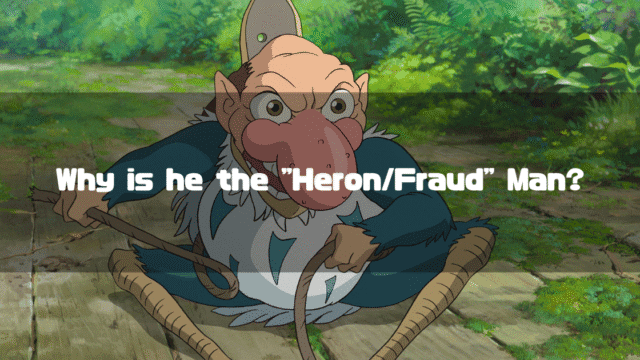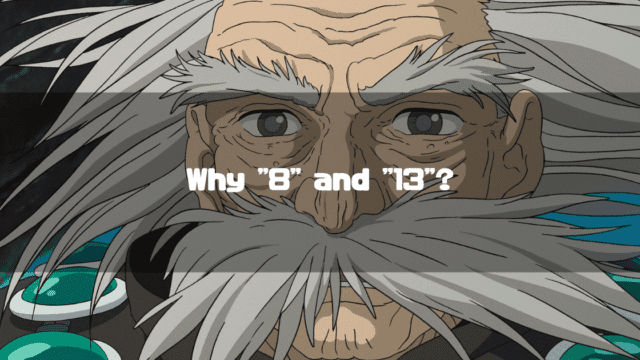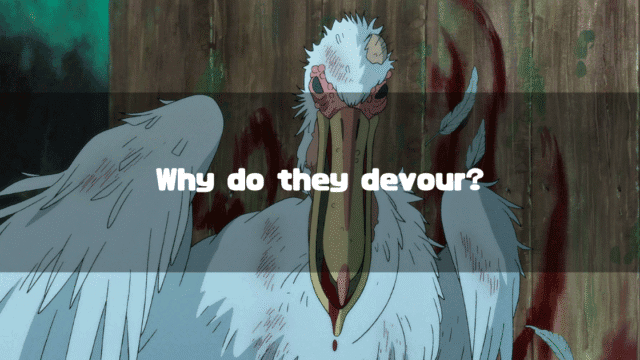5 Centimeters per Second(Official) released on March 3, 2007, is an animated feature film directed by Makoto Shinkai. It is his third theatrical work, following The Voices of a Distant Star and The Place Promised in Our Early Days. A key feature of this film is its complete departure from the science fiction elements present in his previous works.
The film consists of three short stories: “Oukasho” (Cherry Blossom), “Cosmonaut,” and “5 Centimeters per Second.” These are not entirely separate tales but revolve around the protagonist, Takaki Tono. Interestingly, I’ve never heard anyone say they outright “love” 5 Centimeters per Second, which makes one wonder: what kind of story is it really?
*This article is an English translation of the original Japanese article, 「秒速5センチメートル」のネタバレあらすじと考察ポイント-人物相関図付きで各話の詳細をラストまで解説-.
Let an AI walk you through the highlights of this post in a simple, conversational style.
- Detailed Synopsis and Character Map
A brief summary of the film’s plot would be: “Clinging to the feelings of their youth, Takaki Tono and Akari Shinohara find themselves separated by time and distance. As they grow older and follow their own paths, they are swayed by lingering memories. In the end, a reunion never comes to pass, and they each walk toward separate futures.” This article provides a more detailed synopsis and a character map. - Various Points for Analysis
We will explore key points for analysis, such as “The Crucial Opening Scene of the Third Episode” and “The True Speed Indicated by ‘5 Centimeters per Second,’” and introduce more in-depth articles on this blog.
5 Centimeters per Second (2007) Synopsis (Spoilers Ahead)

A Quick Summary and Character Map
A short summary of the key points of 5 Centimeters per Second would be as follows:
- The protagonist is Takaki Tono. The film is composed of three short stories centered around him: “Oukasho,” “Cosmonaut,” and “5 Centimeters per Second.”
- “Oukasho” tells the story of Takaki in middle school, depicting his love for and separation from Akari Shinohara, whom he met in elementary school.
- “Cosmonaut” is told from the perspective of Kanae Sumida, who has a one-sided crush on Takaki after he transfers to a school in Kagoshima. Although her feelings are never reciprocated, Kanae shows personal growth.
- “5 Centimeters per Second” follows Takaki after he starts working, portraying his emotional state as he quits his job to become a freelancer amidst unfulfilling days.
- The story is enveloped in an extremely melancholic atmosphere.
Character Map
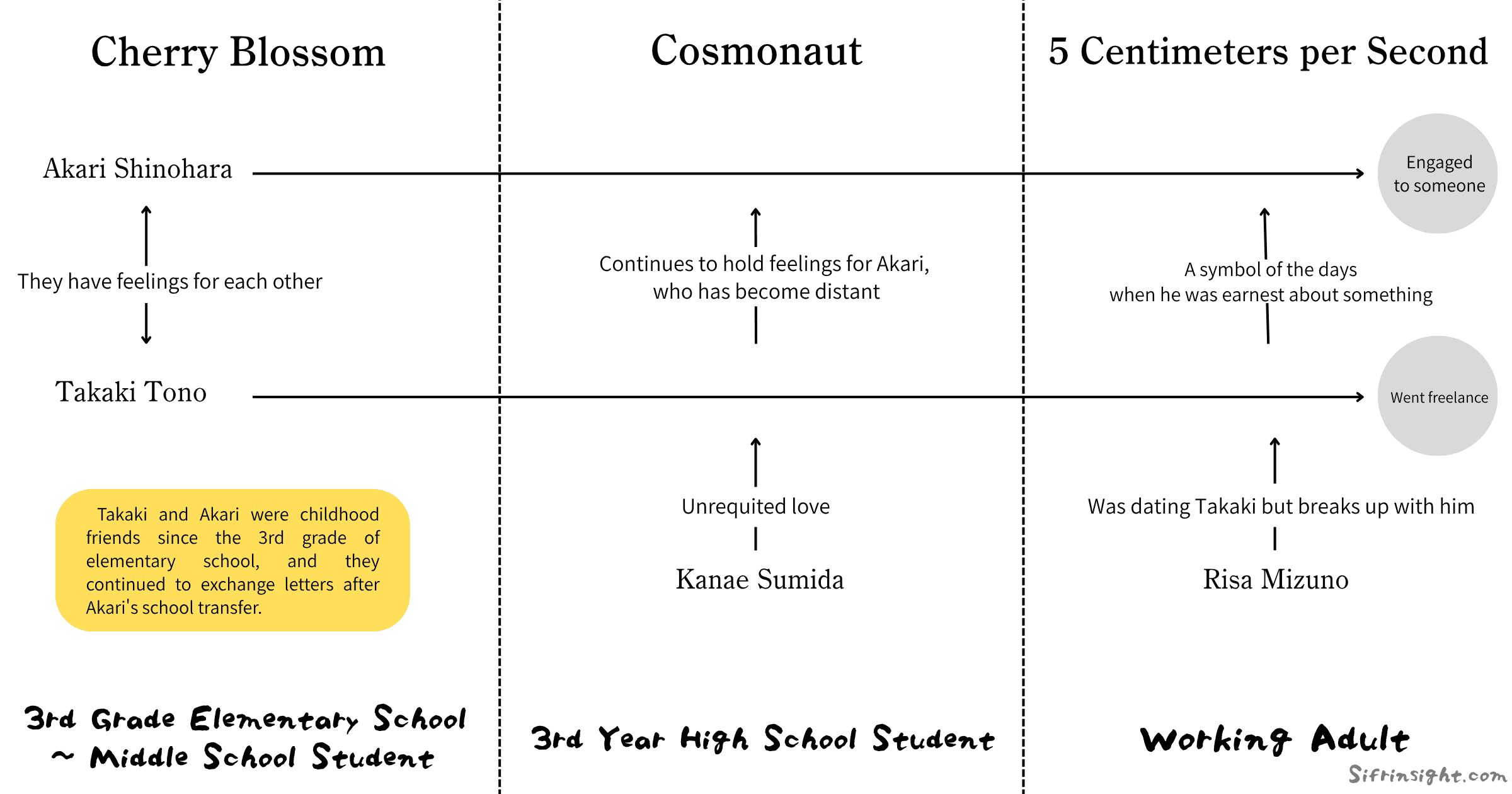
In the character map above, Takaki’s feelings for Akari in the third episode, “5 Centimeters per Second,” are described as “ A symbol of the days when he was earnest about something,” but this is entirely my personal interpretation. Watching the film, it may seem he is still hung up on her, but considering the narrative, it’s more natural to think of her as a “symbol of beautiful days” for a Takaki who works while feeling a sense of “unease” as an adult. This is why I’ve framed it this way.
Story Explanation
Until the very end (which is actually the beginning of the story), 5 Centimeters per Second generally depicts what are considered “negative” situations, such as loss, unattainable desires, and dissatisfaction with the present.
For this reason, it is often categorized as a “depressing anime.” However, all three short stories that make up the film depict a preparatory period for a great leap forward, and I think it’s questionable to label it as merely “depressing” based on that alone.
The most crucial fact is that Takaki Tono, after enduring unfulfilling days, still manages to become a freelancer. This is undoubtedly a reflection of Director Shinkai’s own life journey, and as such, it can be seen as a message of support for those experiencing their own “unfulfilling days.”
After graduating from university in 1996, Director Shinkai joined the game company Nihon Falcom, in Japanese, where he had been working part-time. He left in 2001 and released The Voices of a Distant Star a year later, in 2002.
If you are going through gloomy days, perhaps it is preparation for a great leap forward. If you consider this hidden message, your perception of the somber atmosphere in 5 Centimeters per Second might change.
With that in mind, let’s take a more detailed look at the synopsis of 5 Centimeters per Second.
The story begins on a beautiful spring day. A girl’s voice echoes, explaining that “5 centimeters per second” is the speed at which cherry blossom petals fall. A boy chases after her as she runs. He catches up to her at a railroad crossing, but they are separated by the tracks. The girl, opening a cherry-blossom-pink umbrella, says to him, “It would be nice if we could watch the cherry blossoms together again next year, wouldn’t it?” The girl who opened her umbrella was like a cherry blossom herself.
Episode 1: Oukasho (Cherry Blossom)
The protagonist is a middle school student named Takaki Tono. Living in Tokyo, he reads a letter from his pen pal, Akari Shinohara, who lives in Gunma. The two have known each other since elementary school but haven’t met since their graduation. Her letters, sent from a place far from Tokyo, were filled with nostalgia for the city, but perhaps it was a nostalgia for Takaki himself. And Takaki, too, found in her words a glimpse of “unforgettable days.”
Soon, Takaki is also set to transfer to a school in Kagoshima. Believing it to be their last chance, the two promise to meet in person. On the day of their meeting, Takaki skips his club activities and rushes to meet Akari. However, as if to tear their destinies apart, the train he is on is halted by a fierce snowstorm.
Takaki desperately tries to reach Akari’s station, changing trains, but just then, a gust of wind blows away the letter he intended to give her.
It’s important to consider why the scene of the letter being blown away is included here. Ultimately, it becomes a scene where “the failure to convey something was not my fault, but the fault of some external factor.” But we must not forget that the protagonist is still a middle school student. He probably wanted to blame the impending disaster on the gust of wind. In reality, he too is aware of the future separation.
Having lost the letter, Takaki still pushes on toward his destination. This is not an era of smartphones and easy contact. He had no choice but to trust and move forward.
Eventually, Takaki arrives at the destination station late at night. And there, Akari was waiting for him.
Watching the film, Takaki arrives at the desired station around 11:15 PM. Even with a station attendant present, a middle school girl waiting there should have been sent home much earlier. Did the station attendant perhaps play along with the story’s development?
In the quiet of the night station, Takaki and Akari eat the bento lunch she had made. With the last train long gone, they are unable to go home and leave the station together. After a short walk, they find themselves under a cherry tree that had long lost its petals. But for the two of them, the tree seemed to be in full bloom.
There, they share a kiss. It is an unforgettable moment, but also one that confirms their definitive separation. Feeling Akari’s warmth directly against his skin, Takaki also feels the decisive despair that physical distance will take that warmth away. Still a child, there is nothing he can do.
Afterward, they spend the night in a barn near the cherry tree.
This seems highly improbable. Spending a night in a wooden barn amidst falling snow would be impossible. Yet, they spent the night in a “barn.” What they needed in that moment was a world of their own, and even a rundown barn was enough as long as it could hide them from the outside world. In short, it was a private love hotel for just the two of them. Now, one has to wonder what exactly happened that night.
The next morning, they say their final goodbyes on the station platform. Akari, with a somewhat anxious look, tells him, “Takaki, I’m sure you’ll be okay from now on, absolutely!” In contrast to Akari’s encouraging words, all Takaki can manage to say is, “Thank you. You take care too, Akari. I’ll write to you.”
As she watches the departing train, Akari holds the letter she couldn’t give to Takaki. She, too, had written a letter for him. Like Takaki, she had sensed the end of their story.
On the train ride back, Takaki strongly wished, “I want the strength to be able to protect her.” At the same time, the story of their childhood came to a close.
Episode 2: Cosmonaut
The protagonist is Kanae Sumida, a third-year high school student. She has two important things in her life: surfing, which she started because of her sister’s influence, and a boy named Takaki Tono.
Every morning, she would go surfing early. But this was also an alibi to meet Takaki, who would arrive early for his solo morning practice with the archery club.
It was the time of year to submit their future career plans, but Kanae was undecided about her own path. Reflecting her unstable state of mind, she found herself unable to catch any waves while surfing.
Kanae not only created an alibi to see Takaki in the early morning but also waited for him after school every day. She was desperate to confess her feelings.
In the film, there’s a flashback from Kanae’s perspective. It seems she fell for Takaki almost at first sight when he transferred to her middle school. She studied hard to get into the same high school as him, and during her exam preparations, she consumed a large amount of Estaron Mocha. I get that it works, but it’s not something a middle schooler should be taking in large quantities. I get that it works, though.
Kanae successfully arranges to go home with him. The time spent riding her scooter home from school became special just by having Takaki there (they weren’t riding together; each was on their own scooter). But Takaki himself would take out his phone and check his messages whenever her eyes were off him. Kanae was curious about who he was messaging, but she couldn’t bring herself to ask.
Amidst these hazy days, Kanae remained undecided about her future (she was the only one in her grade who hadn’t submitted her career form). Furthermore, she couldn’t regain her surfing skills. Feeling that everything in her life was half-hearted, Kanae blamed herself.
One day, as she tried to go home with Takaki as usual, she couldn’t find him. Giving up, she gets on her scooter to head home, only to spot Takaki’s scooter. On a hill just ahead, Takaki was staring at his phone, seemingly messaging someone. Curious about the recipient, Kanae instead talks to Takaki about her future plans. When she confesses her uncertainty, she is surprised to hear that Takaki, too, is full of worries. His words bring her a little relief.
Up to this point, the story’s monologue has been Kanae’s. But here, it suddenly shifts to Takaki’s. Takaki transferred to a school in Kagoshima, and near his high school, there is a JAXA facility. He holds a deep interest in space development. He overlaps the “endlessness” of this endeavor with his own life. Perhaps Takaki’s parents work in a related field. And from here, the role of the protagonist returns to Takaki.
The emails that had worried Kanae were, in fact, addressed to no one. Takaki had been writing emails with no recipient night after night. However, they were less like emails and more like a “story.” Takaki was writing down the thoughts within him as a novel, in the form of unsent emails.
Just as Kanae had felt, Takaki also had a sense of frustration. However, it was Kanae who first broke free from such feelings. By rationalizing the fact that she was “hesitating,” Kanae regained her freedom and her surfing skills.
While Kanae rediscovers herself, Takaki remains trapped in his shell, unable to grow. Having grown on her own, Kanae decides to confess to Takaki, but his gentle demeanor, unchanged from before, brings her to tears. She had realized it: that Takaki was stagnant, that her feelings would never reach him, and above all, that she had surpassed him.
As if to bless their separation, a rocket splits the sky. The two are now set to walk completely different paths in life.
Kanae comes to the conclusion that “Takaki had never even been looking at me from the start.” But this was likely another way of expressing how the person before her had changed in meaning. For her, Takaki had become a part of her past. Still, as if performing a final farewell ceremony with Takaki, she wept in her bed, telling herself that she should be able to love him forever.
Episode 3: 5 Centimeters per Second
On a spring day with cherry blossoms fluttering down, Takaki Tono was working from home. Lured by the wind blowing in from outside, he decides to go for a walk. At a railroad crossing during his walk, he passes by a certain woman. Takaki has a gut feeling it’s “her” and turns around to confirm, but a passing train obstructs his view. At the same time, memories of the past flood back to him.
After finding a job in Tokyo, Takaki had been living unfulfilling days. He had worked hard within the logic of his company, but he felt pained by such a life. Simultaneously, his relationship with his girlfriend deteriorated, and Takaki found himself in a quagmire.
While Takaki was stuck, Akari Shinohara was busy preparing for her wedding. Visiting her parents’ home by chance, Akari reminisces about the old days. She finds the letter she was never able to give Takaki and dreams of him.
In the end, Takaki is broken up with by his girlfriend via email.
The email from his girlfriend reads, “Even though we exchanged 1,000 emails, our hearts only moved about 1 centimeter closer.” It’s such a literary expression that I always chuckle a little here. Takaki’s following monologue is also quite literary, making me want to quip, “If you can compose a monologue like that, you’ll be just fine.”
Takaki reflects on the four years since he started working. He had been tormented by a vague desire to just move forward, but in the end, he found himself in a stagnant life of simply “getting through the days.” Realizing that the desire to “move forward” had vanished from within him, Takaki decides to quit his job. And Takaki, too, dreams of Akari.
Akari with her marriage, and Takaki with his resignation, both took a new step forward. The season had changed from a cold, snowy winter to a gentle spring.
At the railroad crossing during his walk, Takaki passes by a woman he believes to be Akari. He turns back, but a train blocks his view. After the train passes, the woman is gone.
Takaki is enveloped in a slight sense of loneliness but takes a powerful step forward into his new life.
That is the synopsis of 5 Centimeters per Second. Although I call it a synopsis, it seems to contain some of my own interpretations, so you might feel some contradictions when you watch the film, but that’s just how it is.
Next, let’s talk about what I personally consider to be the key points for watching the film.
5 Centimeters per Second (2007) Points for Analysis

Now, I’d like to discuss some points for enjoying 5 Centimeters per Second. There are two main points: “the opening scene of the third episode” and the mystery of the speed “5 centimeters per second.”
The Crucial Opening Scene of Episode 3
I couldn’t include this in the synopsis, but at the very end of the film (the end of the third episode), the title “5 Centimeters per Second” appears as Masayoshi Yamazaki’s “One more time, One more chance” begins to play.
Loading video...
Because the lyrics include the line “I’m always searching for you somewhere…”, it makes it seem as though the protagonist, Takaki Tono, is still chasing after Akari Shinohara even as an adult. Furthermore, in stark contrast to Takaki’s messy state, Akari is steadily preparing for her marriage to someone else, which seems to leave many viewers with a gloomy feeling about the work. However, you don’t have to watch this film with such feelings.
The key to watching this film is the opening scene of the third episode.
I understand feeling gloomy at the end of the film, but in fact, the opening scene of the third episode depicts what happens after the end. That spring day is the most recent version of the protagonist, Takaki Tono, and it was when he passed the woman at the railroad crossing that he remembered “those days.” If you watch without forgetting that beautiful opening scene, you’ll see that 5 Centimeters per Second is by no means a depressing film.
What Speed is “5 Centimeters per Second”?
And another point is, what exactly is the speed of “5 centimeters per second”? Of course, it’s “the speed at which cherry blossom petals fall,” but that’s not all. “5 Centimeters per Second” is the title of the entire work, but it is also the title of the last short story.
This means that the speed of “5 centimeters per second” is hidden within the final story. So, what exactly is moving at “5 centimeters per second”?
I delve deeper into these points in the following article.
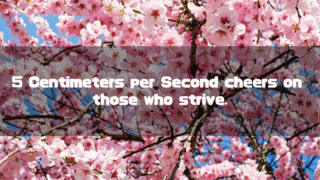
I encourage you to watch the film and see how your interpretations align.
About the Author
Recent Posts
- 2025-10-15
Indiana Jones and the Dial of Destiny(2023):Historical Background-WWII, the Real Dr. Schmidt, the Siege of Syracuse, and the Antikythera Mechanism - 2025-10-08
Why Does Children Who Chase Lost Voices Feel So Ghibli-esque? [Makoto Shinkai’s “Tale of Farewell”] - 2025-10-07
5 Centimeters per Second: Characters, Voice Actors, Character Analysis and Character Map - 2025-10-06
5 Centimeters per Second: Full Synopsis, Analysis, Ending Explained & Character Map (Spoilers) - 2025-10-04
5 Centimeters per Second Is Neither Depressing Nor Terrible: A Positive Interpretation of the Film



